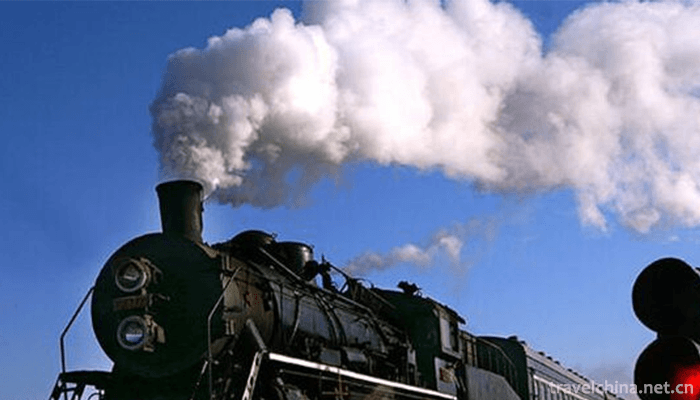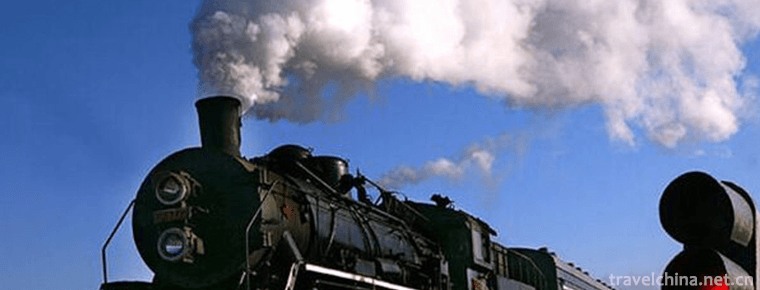Iron Coal Steam Locomotive Museum
Iron Coal Steam Locomotive Museum
Tiaobingshan Steam Locomotive Museum, formerly known as Iron Coal Steam Locomotive Museum. National AAAA-level scenic spots and national industrial tourism demonstration sites. The scenic spot has 21 steam locomotives which are few in the world and can operate normally. Some of them are operated. The rest are stored in the exhibition hall of steam locomotives covering more than 3000 square meters.
The museum now has three luxury old-fashioned passenger trains and one steam locomotive exhibition room. It runs on a 220-kilometer railway line across three counties and two cities (Tieling, Faku, Kangping, Tieling and Shenyang). It has designed a series of tourism projects for tourists, such as "Steam Locomotive Photography", "Steam Locomotive Trial Driving", "One-day Stationer" and "Industrial Mine Tour". 。
Collection
brief introduction
Iron Coal Group (now renamed TieNeng Group) as a national top 500 enterprise located in Tiaobingshan City, has a long history. Now, 21 steam locomotives have been reserved, forming a flowing steam locomotive Museum for people to visit and visit. On large holidays, tourists will also open the link of driving in person, attracting a large number of overseas friends to exchange visits, and even Japanese friends have bought them at high prices, but they have been refused by local authorities.
Since the opening up in 2000, more than ten foreign tourists from the United States, France, Russia, Belgium, Finland, the Netherlands, the United Kingdom, Italy, Japan and other countries have come to visit, and more than a dozen domestic theatre groups have come to take pictures of steam locomotives.
Influence
Tiaobingshan City is a county-level city which mainly produces coal approved by the State Council in 1982. Because it is adjacent to Faku County and Tieling City, its original name is Tiefa City, which was formally renamed Tiaobingshan City in 2002. Tiefa Coalfield has identified a coal industry reserves of 2.32 billion tons, accounting for more than one third of Liaoning's total coal. In 2000, Tiefa Coalfield entered the top ten coal mines in China.
Since the establishment of mining in 1958, the output and benefit of coal have been increasing year by year. In 1991, the output exceeded 10 million tons. Since 1997, the annual output has reached more than 15 million tons. Over the years, steam locomotives have made great contributions in the field of coal production and transportation.
However, with the development of the times, the steam locomotive is no longer the leading role in the transport industry, replaced by diesel locomotives and electric locomotives.
But the historical achievements and innovative spirit of steam locomotives can not be forgotten.
Promotion 4A
Tiaobingshan Iron Coal Steam Locomotive Scenic Spot was officially approved by the National Tourism Administration and promoted to the national AAAA level scenic spot. The unveiling ceremony was held on January 14, 2013. Sun Delan, Vice Mayor of Tieling Municipal People's Government, congratulated the Tieling Municipal Committee and the Municipal Government on the promotion of the Steam Locomotive Museum.
Sun Delan pointed out that the museum should take this promotion as an opportunity to strengthen the construction of infrastructure and service facilities, strive to open up the tourism market, create an international tourism brand with characteristics, and continue to contribute to the development of Tieling tourism and the new step of industrial tourism in the province.
Tiaobingshan Iron and Coal Steam Locomotive Museum opened in 2004. It has 113 kilometers of railway trunk line and 101 kilometers of station line. There are 21 steam locomotives, including 18 upstream locomotives, 1 construction locomotive, 1 jump-forward locomotive and 1 KD6 locomotive. The time of leaving the factory varies from 1943 to 1999. With the existing resources and conditions, the Ministry of Railway Transportation of Tiecheng Group has established four bases, namely, steam locomotive tourism, development and manufacture of steam locomotive products, film and television shooting of steam locomotives, and cultural exchange of steam locomotives. They are known as the "flowing steam locomotive museum". Every year, tens of thousands of people come to visit and visit, calling for "China's first, world-famous" steam locomotive tourism products in China. Tieling has become the second national AAAA scenic spot after Qinghe Reservoir scenic spot.
Film and TV Base
As of December 2016, Tiaobingshan Iron and Coal Steam Locomotive Museum Steam Locomotive Movie and Television City has cooperated with the shooting task of 37 films and TV dramas. The scenes are taken all over the stations, platforms, streets, exterior scenes and steam locomotives and other professional props, filling in the blank of no professional steam locomotive film and television shooting base in China at that time. The scenic film and television city has complemented Shenyang Guandong Film and TV City, Lushun Chuangguandong Film and TV City, Tieling Qinghe Longquan Villa Film and TV City, giving full play to its own characteristics, so that the shooting of many related film and television works can be completed in Liaoning Province.
Overseas Evaluation
American friends said: There are so many steam locomotives in Tiaobing Mountain, so good that it is rare in the world. Tienang Group's existing 20 steam locomotives are unique cultural relics of Tiaobing Mountain, which can be called world-class. This unique tourist resources are open to tourists, so that tourists can feel the magnificent scenery of Tielang Coal Sea.
German tourists praise: driving motorcycles and sightseeing in scenic spots give people a sense of beauty of returning to nature and the past.


-
2.Detian waterfall
Detian Waterfall is located in Detian Village, Shuolong Town, Daxin County, Chongzuo City, Guangxi Zhuang Autonomous Region. It is located in the upper reaches of Guichun River on the border between C
Time 2018-12-12 -
3.Arirang
Alirang, known as Alirang Daling, is a famous Korean song and the most representative folk song on the Korean Peninsula. It is known as the "First National Anthem" and "National Songs&q
Time 2019-03-28 -
4.Red boxing
Red boxing originated in Zhou and Qin Dynasties, became famous in Tang and Song Dynasties and prevailed in Ming and Qing Dynasties. It is an important link
Time 2019-05-03 -
5.Hubei Xiaoqu
Hubei Xiaoqu is one of the traditional operas in Hubei Province. It consists of "Hantan Xiaoqu" and "Tianzhao Xiaoqu". Han Tan Opera, also known as "Hankou Tan Opera" and
Time 2019-05-03 -
6.Hakka Folk Songs in Meizhou
Meizhou Hakka folk song is a Hakka folk song sung in Meizhou City, Guangdong Province (Meijiang District, Meixian District, Xingning City, Wuhua County, Fengshun County, Dapu County, Pingyuan County,
Time 2019-06-03 -
7.Ba Jin
Ba Jin (November 25, 1904 - October 17, 2005), male, Han nationality , Sichuan Chengdu Man, his ancestral home Zhejiang Jiaxing 。 Ba Jin's original name Li Yao Tang And another pen name, Pei pole, bli
Time 2019-09-06 -
8.Guanyin Pavilion
Stand on Ezhou The city's Xiaodong gate dike overlooks the Yangtze River, and a huge reef stands in the center of the Yangtze River. Long pan Ji " It is also known as "Wanli Changjiang first
Time 2019-09-20 -
9.Daheishan Forest Park
Daheishan Forest Park is located in Wuben Township, Renhe District, Panzhihua City, Sichuan Province. From the center of Panzhihua bingcaogang River Panshan 58 kilometers, through Guaziping, Lanjian mine and Wuben township.
Time 2020-10-15 -
10.Xiaoxiangling scenic spot
The synonym Xiaoxiangling generally refers to Xiaoxiangling scenic spot
Time 2020-10-16 -
11.Scientific research on Chengdu Giant Panda Base
As of 2016, it has undertaken one national major basic research project (former "973" project), one national "Tenth Five Year Plan" high technology research (863 plan), several provincial, ministerial and municipal scientific research projects and Chengdu Giant Panda Breeding
Time 2020-12-13 -
12.Mianyang scenic spots
Mianyang City is a famous historical and cultural city in Sichuan Province, the main node of the dajiuzhai international tourism circle and the Three Kingdoms Shu Road culture international tourism line. It has a 5A level scenic area of "Beichuan Qiang city tourism area"
Time 2020-12-14